#resource guide
Text
hey just fyi i updated, organized, and removed broken links from the resource guide i made a while ago! it's originally from the resource dump channel of the spn amv editors discord, but it's got helpful stuff for any spn creators (editors, gifmakers, meta-writers, fic writers, etc) and any video editors from any fandom! Here's the link, and here's a lil info on what kind of stuff you'll find on each page:
General Resources - links useful for amv editors from any fandom. things like tutorials, overlay packs, and software downloads.
SPN Scenepacks - big list of links to downloadable scenepacks sorted by character, ship, and season
SPN Episodes, Clips, & Deleted Scenes - what it says on the sign.
Other SPN Resources - various links to spn-specific resources like timelines, transcript search, the amv archive, etc!
anyway, i am asking that you please do not post the link to this drive elsewhere, and especially not on other websites (cough the bird one cough)!! pls keep it on tumblr <3
#if this gets over like. 300 notes i will probably break the link so copy the sheet while u can#also if you see this post and the link is broken feel free to shoot me an ask and i will send u a new link privately#i think thats all#hope it's helpful!#ohh also the ''server source'' column just indicates which user sent the link into the discord!#dont ask to join the discord it's really not active anymore LOL#however besties who are listed as sources pls feel free to lmk if you want to be removed/have ur name or url changed fdjiaghldas#i think i updated all names and urls but im not sure#slay.#👍#resource guide
255 notes
·
View notes
Text

neocities guide - why you should build your own html website
do you miss the charm of the 90s/00s web where sites had actual personality instead of the same minimalistic theme? are you feeling drained by social media and the constant corporate monopoly of your data and time? do you want to be excited about the internet again?
try neocities!!
what is neocities?
neocities is a free hosting website that lets you build your own html website from scratch, with total creative control. in their own words:
"we are tired of living in an online world where people are isolated from each other on boring, generic social networks that don't let us truly express ourselves. it's time we took back our personalities from these sterilized, lifeless, monetized, data mined, monitored addiction machines and let our creativity flourish again."
why should I make my own website?
web3 has been overtaken by capitalism & conformity. websites that once were meant to be fun online social spaces now exist solely to steal your data and sell you things. it sucks!!
building a personal site is a great way to express yourself and take control of your online experience.
what would I even put on a website?
the best part about making your own site is that you can do literally whatever the hell you want! focus on a specific subject or make it a wild collection of all your interests. share your art! make a shrine for one of your interests! post a picture of every bird you see when you step outside! make a collection of your favorite blinkies! the world is your oyster !!
here are some cool example sites to inspire you:
recently updated neocities sites | it can be fun to just look through these and browse people's content!
space bar | local interstellar dive bar
creature feature | halloween & monsters
big gulp supreme
peanutbuttaz | personal site
dragodiluna
linwood | personal site
patho grove | personal site
getting started: neocities/html guide
sound interesting? here are some guides to help you get started, especially if you aren't familiar with html/css
sadgrl.online webmastery | a fantastic resource for getting started with html & web revival. also has a layout builder that you can use to start with in case starting from scratch is too intimidating
web design in 4 minutes | good for learning coding basics
w3schools | html tutorials
templaterr | demo & html for basic web elements
eggramen test pages | css page templates to get started with
sadgrl background tiles | bg tiles
rivendell background tiles | more free bg tiles
fun stuff to add to your site
want your site to be cool? here's some fun stuff that i've found
blinkies-cafe | fantastic blinkie maker! (run by @transbro & @graphics-cafe)
gificities | internet archive of 90s/00s web gifs
internet bumper stickers | web bumper stickers
momg | gif gallery
99 gif shop | 3d gifs
123 guestbook | add a guestbook for people to leave messages
cbox | add a live chat box
moon phases | track the phases of the moon
gifypet | a little clickable page pet
adopt a shroom | mushroom page pet
tamaNOTchi | virtual pet
crossword puzzle | daily crossword
imood | track your mood
neko | cute cat that chases your mouse
pollcode | custom poll maker
website hit counter | track how many visitors you have
web revival manifestos & communities
also, there's actually a pretty cool community of people out there who want to bring joy back to the web!
melonland project | web project/community celebrating individual & joyful online experiences. Also has an online forum
melonland intro to web revival | what is web revival?
melonking manifesto |
status cafe | share your current status
nightfall city | online community
onio.cafe | leave a message and enjoy the ambiance
sadgrl internet manifesto |
yesterweb internet manifesto | sadly defunct, still a great resource
reclaiming online social spaces | great manifesto on cultivating your online experience
in conclusion
i want everyone to make a neocities site because it's fun af and i love seeing everyone's weird personal sites that they made outside of the control of capitalism :)
say hi to me on neocities

#neocities#old web#webcore#old internet#web revival#indie web#html#website#recource#guide#can you tell that i've gotten REALLY into neocities this month!!!!!#but its so FUN i love seeing everyones weird af websites#its amazing#i love celebrating the old web#ANYWAYS MAKE A NEOCITIES HERES A GUIDE#i haven't touched html in like a decade#and i've been having a great time relearning#:)#share your sites with me!!!!!!#oh and share resources if you have them!
72K notes
·
View notes
Text
Living with Depression: Why Biology and Biography Matter Along the Path to Hope and Healing by Deborah Serani (2nd edition) | Book Review ~ Giveaway | #SelfCare #Psychology #NonFiction @iReadBookTours @DeborahSerani
In the fully updated second edition of Living with Depression – Why Biology and Biography Matter Along the Path to Hope and Healing, Serani outlines the various forms of depression, describes the different treatments, and outlines methods for living with depression and getting the help you or a loved one needs.
Tips on how to choose a good therapist, negotiate the labyrinth of healthcare, and minimize stigma are addressed, as is learning how to use biology and biography as tools of empowerment. There is no other book that offers what Living with Depression – giving readers a dual perspective of what it’s like to know depression as a clinician and as a patient.
#SelfCare #Psychology #NonFiction
@iReadBookTours @DeborahSerani @Dr. Deborarh Serani @acornsireadbooktours
Living with Depression: Why Biology and Biography Matter Along the Path to Hope and Healing by Deborah Serani (2nd edition) | Book Review ~ Giveaway | #SelfCare #Psychology #NonFiction @iReadBookTours @DeborahSerani
A book blog tour from iRead Book Tours.
Thank you to the author, publisher, & Lauren at iRead for providing me with the information for this tour.
Book Details
Content Rating: PG:…

View On WordPress
#2023 Book Reviews#book review#Books#Deborah Serani#Depression#iRead Book Tours#nonfiction#Resource Guide#Self-care
0 notes
Text
Fantasy Guide to Building A Culture

Culture is defined by a collection of morals, ethics, traditions, customs and behaviours shared by a group of people.
Hierarchy and Social Structures

Within every culture, there is a hierarchy. Hierarchies are an important part of any culture, usually do ingrained that one within the culture wouldn't even question it. Hierarchy can be established either by age, gender or wealth and could even determine roles within their society. Sometimes hierarchy can may be oppressive and rigid whilst other times, ranks can intermingle without trouble. You should consider how these different ranks interact with one another and whether there are any special gestures or acts of deference one must pay to those higher than them. For example, the Khasi people of Meghalaya (Northern India), are strictly matrillineal. Women run the households, inheritance runs through the female line, and the men of the culture typically defer to their mothers and wives. Here are a few questions to consider:
How is a leader determined within the culture as a whole and the family unit?
Is the culture matriarchal? Patriarchal? Or does gender even matter?
How would one recognise the different ranks?
How would one act around somebody higher ranking? How would somebody he expected to act around somebody lower ranking?
Can one move socially? If not, why? If so, how?
Traditions and Customs

Traditions are a staple in any culture. These can be gestures or living life a certain way or to the way a certain person should look. Traditions are a personal detail to culture, they are what make it important. Tradition can dictate how one should keep their home, run their family, take care of their appearance, act in public and even determine relationship. Tradition can also be a double edged sword. Traditions can also be restrictive and allow a culture to push away a former member if they do not adhere to them, eg Traditional expectations of chastity led to thousands of Irish women being imprisoned at the Magdelene Laundries. Customs could be anything from how one treats another, to how they greet someone.
How important is tradition?
What are some rituals your culture undertakes?
What are some traditional values in your world? Does it effect daily life?
Are there any traditions that determine one's status?
Values and Opinions
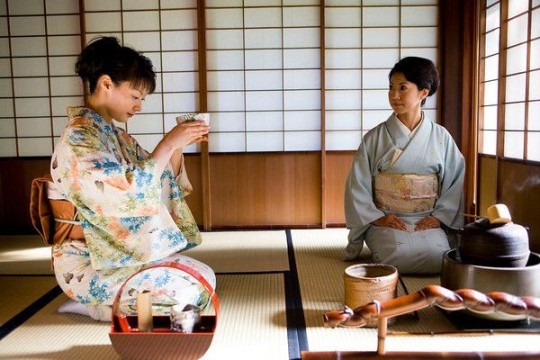
Values and Opinions are the bread and butter of any culture. This is the way your culture sees the world and how they approach different life hurdles. These may differ with other cultures and be considered odd to outsiders, what one culture may value another may not and what opinion another holds, one may not. There will be historical and traditional reasons to why these values and opinions are held. Cultures usually have a paragon to which they hold their members to, a list of characteristics that they expect one to if not adhere to then aspire to. The Yoruba people value honesty, hard work, courage and integrity. Here are some questions to consider?
How important are these ethics and core values? Could somebody be ostracised for not living up to them?
What are some morals that clash with other cultures?
What does your culture precieved to be right? Or wrong?
What are some opinions that are considered to be taboo in your culture? Why?
Dress Code

For many cultures, the way somebody dresses can be important. History and ethics can effect how one is meant to be dressed such as an expectation of chastity, can impose strict modesty. While other cultures, put more importance on details, the different sorts of clothes worn and when or what colour one might wear. The Palestinian people (من النهر إلى البحر ، قد يكونون أحرارا) denoted different family ties, marriage status and wealth by the embroidery and detailing on their thoub.
Are there traditional clothes for your world? Are they something somebody wears on a daily basis or just on occasion?
Are there any rules around what people can wear?
What would be considered formal dress? Casual dress?
What would happen if somebody wore the wrong clothes to an event?
Language

Language can also be ingrained as part of a Culture. It can be a specific way one speaks or a an entirely different language. For example, in the Southern States of America, one can engage in a sort of double talk, saying something that sounds sweet whilst delivering something pointed. Bless their heart. I have a post on creating your own language here.
Arts, Music and Craft

Many cultures are known for different styles of dance, their artwork and crafts. Art is a great part of culture, a way for people to express themselves and their culture in art form. Dance can be an integral part of culture, such as céilí dance in Ireland or the Polka in the Czech Republic. Handicrafts could also be important in culture, such as knitting in Scottish culture and Hebron glass in Palestine. Music is also close to culture, from traditional kinds of singing such as the White Voice in Ukraine and the playing of certain instruments such as the mvet.
Food and Diet

The way a culture prepares or intakes or treats certain foods are important to a culture. In some cultures, there is a diet yo adhere to, certain foods are completely banned. With Jewish culture, pork is prohibited along with fish such as sturgeon, along with shellfish and certain fowl. Meat must also be prepared in a certain way and animal byproducts such as dairy, must never be created or even eaten around this meat. This is known as kosher. The way one consumes food is also important to culture. In some cultures, only certain people may eat together. Some cultures place important on how food is eaten. In Nigerian culture, the oldest guests are served first usually the men before the women. In Japanese culture, one must say 'itadakimasu' (I recieve) before eating. Culture may also include fasting, periods of time one doesn't intake food for a specific reason.
What are some traditional dishes in your world?
What would be a basic diet for the common man?
What's considered a delicacy?
Is there a societal difference in diet? What are the factors that effect diet between classes?
Is there any influence from other cuisines? If not, why not? If so, to what extent?
What would a typical breakfast contain?
What meals are served during the day?
What's considered a comfort food or drink?
Are there any restrictions on who can eat what or when?
Are there any banned foods?
What stance does your world take on alcohol? Is it legal? Can anybody consume it?
Are there any dining customs? Are traditions?
Is there a difference in formal meals or casual meals? If so, what's involved?
Are there any gestures or actions unacceptable at the dinner table?
How are guests treated at meals? If they are given deference, how so?
#Fantasy Guide to Building A Culture#As promised#If I fail my German exam I'm blaming ye#Culture#Building a culture#Fantasy Guide#WorldBuilding#WorldBuilding guide#WorldBuilding help#Writing help#writing#writeblr#writing resources#writing reference#writing advice#ask answered questions#writers#writing advice writing resources#spilled ink#ask answered
9K notes
·
View notes
Text
PDXblackout Resource Guide
Yet Another Resource Guide
2023 AUGUST 22 - 14:44 PST
...in no particular
Department of Human Services
SNAP is going to be very key in getting the most out of this guide. You will need to apply for it if you haven't already, and make sure that you're in communication with DHS to keep your benefits active. The golden ticket we will be looking at is the benefits verification letter. You're going to need that.
Google Drive / Photos
Create a Google account. Access http://drive.google.com and http://photos.google.com to bring up these tools I'm telling you about. Take pictures with your phone of any documents you possess which will be important in this undertaking. This includes and is not limited to a driver's license or state issued ID, social security card, birth certificate, Portland Rescue Mission ID, SNAP Benefits Verification Letter, meeting sheets, this method may not be for you, but consider it, since it worked and is working for me.
Oregon Health Plan
If you see me with some nice headphones, it's because I pursued getting my insurance to pay for them. Flex funds are really useful, I'm still learning about them, I've seen people get an array of help from this one resource. OHP pays for my nicotine products, my medication, my doctor visits, my dental visits and no telling what else. Get. The. Free. Insurance.
Billie Olegard Dental Clinic
I had a pretty severe dental issue and thought I was losing my teeth. In two appointments this dental clinic that is right next to the outpatient classes totally took care of it, didn't cost me anything out of pocket except my time and acceptance. It's still a dentist's office. Kelly the dental hygienist is awesome.
8x8 Richard Harris Building
Laptops can be checked out from the case manager office. Supported housing is the basis of our programs, the Mentor Program and the 8x8 Community Program. My case manager and the other case managers have been pivotal in my success. We are able to receive mail. A form was filled out for me that guaranteed I had been homeless and I was able to go get my state ID made with just my birth certificate for free, I got that at the 8x8. If you have a supported housing apartment, use it.
Central City Concern Recovery Center
Stephanie and Anthony have teamed up to do some really awesome stuff for me. It's really important to learn how to show up for our schedules on time, reducing tardiness is part of reintegrating back into a standard level of society.
NARCAN
Nasal spray NARCAN is available for free through Old Town Clinic and other agencies. Normally it takes about four of them to work, so if you're going to use them, use a lot of them! The NARCAN training video is on YouTube. Watch it several times if you plan to use NARCAN. It's important to follow all the instructions!
Blanchet House
Free meals, hygiene items, peer support.
Portland Rescue Mission
Free meals, socks, but most importantly they will make an ID card for you on the spot even in the middle of the night. I got mine while I was still using and I've still got it to this day. It will have your picture and name on it. Not many questions asked. It meant a lot to me and I was able to pick up prescriptions with it. You will need this specific ID when you receive services from PRM.
Union Gospel Mission
I stayed at UGM's LifeChange program for a total of about two weeks. I didn't stay, but I've stayed tied in with those guys and they're on my side. They also offer free food services throughout the week.
St. Andre
Free food, fill out a form get a food box, Father Tom prayed with me when my grandmother was passing away, genuine people, good coffee.
TRIMET
Requires ID, SNAP benefits letter. Take the required documents to the TRIMET office at Pioneer Square and ask for an Honored Citizen pass. They will take your picture and probably give you the rest of the month for free. You can ride all the bus lines, the MAX and the streetcar with this pass. It is absolutely essential if you're starting completely over like I have.
Transitional Projects
Showers, mail services, laundry, and to me the most important aspect was that they made me an ID specific to TPI services. I haven't been to TPI since I got clean, but they did matter in my addiction. They also offer a locker service but I never really used it.
RentWell
Online class usually takes 6 to 8 weeks, I was done with the coursework in 4 days. They help you get and keep housing and teach you about tenant law! Now I have a RentWell case manager.
Community Volunteer Corps
Take advantage of the opportunity to participate in CVC. It is my opinion that the point of CVC is to leave for work sober, be productive and give back, then come back, together, still sober. Work together, make it fun, and be on time. The reference letters are different for everyone. Don't cheat the system.
Employment Access Center
The EAC is providing services to me for the next two years according to Will, my EAC worker. They've helped people get shoes, clothing, cell phones, bills paid, and more. My first day with them they helped me get signed up on iMatch through Oregon Works and although I have a different resume prepared, we created a new one, too. We're going to be working on cover letters and figuring out what my goals are and actually achieving them.
Nike BIKETOWN Access for All
The Nike bikes are still free at the time of writing this. Just upload your benefits verification letter to their Access for All page and fill it out, creating an account, all that goodness.
Multnomah County Library, Kenton and Hollywood Locations
https://multcolib.org/services
The library offers a tech lending program that at the time of writing this just sent me a laptop and a mobile hotspot. It takes a while to get the equipment, but you can apply for free. Do you have a library card? It's crucial. I got mine made, originally, with my Portland Rescue Mission ID card! Free printing services are offered, which I used to print off the standard readings for Brothas and Get Your Fix. I've also used it to print off stuff I wanted to read like free stuff listings on Craigslist, song lyrics, and education information.
William Temple House
Their food bank is still a huge asset for me, and if you've never had them then on Tuesday morning, if you're first, they'll give you a total of twenty five dollars in vouchers to their thrift store, but the most important service I've received from WTH has been from Emily, where she signed me up using their address for a year long HOP card pass. You've gotta have a HOP card with the Honored Citizen.
MHACBO
While pursuing a certification, I found the oral health training and other online classes. I accomplished something by doing this, and earned a continuing education credit.
TextNow
When I first got here all I had was a phone that I wasn't the original owner of, and it couldn't get service. Thanks to Wi-Fi and TextNow, I was able to send text messages, make phones, and have a phone number for free. There are advertisements built in.
211
I've called 211 several times especially recently, they provide me with an operator who's entire job is based around helping people get in touch with the resources they need.
Old Town Clinic
Get a primary care physician, get nicotine replacement, be honest about your medical conditions. I always double check with my case manager if I'm going to miss something, but he always tells me that medical appointments are a solid reason to miss check-in.
Social Security Administration
There was totally some police type activity when I went up there, but everything went fine overall. It was a little stressful, they asked me to take my shoes off, but it didn't cost me anything and I made it out without confrontation. They gave me a piece of paper that day which would let me get a job, and my social security card was in the mail about a week later.
Right 2 Dream 2
This is a homeless shelter beside the Yellow Line MAX at the Moda Center. The table there and the fridge there sometimes contains food. I stayed there the night before I went to Hooper. The higher ups there like recovery, feel free to check the fridge.
Cash App
Functions as a bank account, easy to transfer funds, free debit card.
Chime
Functions as a bank account, free debit card.
Alano Club of Portland
Recovery meetings every single day without regular exception.
909 NW 24th Avenue
Sunshine Division
My first day at the 8x8, Michael went and got me a food box from Sunshine Division. At the time of writing this, I went and got one today, too. Good solid consistent resource. You're not going to feed an army with a food box from Sunshine Division, but it's worthwhile.
Affordable Connectivity Plan
Government assistance for individuals that qualify, that provides us with free phones and phone service. Free phones and service can be obtained from Assurance Wireless, Excess Telecom, and Cricket Wireless.
CCC ROC
Clothing closet, ask a mentor or case manager about it.
Salvation Army on Killingsworth
Awesome food bank, has a clothing closet too.
DoorDash
At the time of writing this, DoorDash is my only employer. I was so excited when my background check came back fine. It took a while to get accepted, but I've been able to pay for things by delivering DoorDash orders. I've used my personal Trek bicycle, Lime scooters, Spin scooters, and mostly the Nike BIKETOWN bikes to deliver orders.
Home Forward
Housing vouchers are a thing out there, so when the wait list opens up, apply. Sometimes they bump people up on the wait list based on their situations.
Alcoholics / Narcotics Anonymous
There's a hotline we can call for all the different areas. Going to meetings, working the steps, living a life in recovery, has been the cornerstone of keeping me clean. I have a couple different apps on my phone, but there's one each of AA and NA that helps me find meetings based on criteria and location.
Nicotine Gum
I smoked as many cigarettes as I could when I first got here. I still smoke, but I smoke a lot less than I did. Nicotine products have been a huge part of that, and OHP pays for it.
Bombas
Free socks.
BottleDrop
Whether your coping strategy is to take a sober friend with you, wearing headphones, or something else, have a serious and well enforced plan in effect if you plan to turn in cans and bottles in Portland. There's people smoking fentanyl everywhere, people trying to sell drugs, people walking around naked, it's insanity. I've walked out of the line and left my cans a couple times or more. Also if you aren't careful they will make your room stink. Anyways, Rite Aid and Whole Foods accept cans, and the BottleDrop at Delta Park is my personal favorite, but the one at 122nd has a machine that counts them for us, we just pour them out on a conveyor belt and it's kind of cool to watch. It isn't pretty, but this is how I paid for a lot of stuff while I've been here.
DMV2U
Input your identifying information and become able to set DMV appointments.
Lynn on the 7th floor
She's been giving me free tobacco since I got here. This could end at anytime and she would be at no fault, she is an angel for doing this and you are not guaranteed anything. At the time of writing this the free tobacco and papers hours are 1100 to 2000, or 11 a.m. to 8 p.m., please do not harass her, but she will help you.
Dollar Tree
Affordable food, locations are convenient, sells can openers although they break, sells batteries, accepts food stamps, sells ramen noodles.
Goodwill Bins
Buy electronics and other goods by the pound. Grab bags of hygiene supplies for around ten dollars a bag. Easily get a hundred bucks worth of hygiene stuff for ten bucks.
Straightway Services
Located on Vancouver way, food bank service on Wednesdays.
Project 529
Register your bicycle with pictures and serial number and description, get a certificate of registration. Check the serial number of bicycles to see if they are reported stolen within the system.
SOLVE
I signed up to be an event leader for Stop Oregon Litter and Vandalism when I first got here and the date snuck up on me, then I had to actually go do the event. We didn't do it again after that but we had a great time and the event was a success. It's part of my resume now.
Elevate HIM
Nonprofit organization that helps prevent suicide in men by equipping them with proper clothing starting with a suit!
#street roots#resource guide#portland#oregon#pdx#free stuff#recovery#dental care portland#register bike portland#food box portland#free food portland#nike biketown#lime scooter free#spin scooter free#free bike portland#free hop card#free bus pass#kenton#downtown portland#503#delta park#pearl district#north portland
1 note
·
View note
Text

Chibi foliage guide: Rose (pt.2)
#how to draw#art tutorial#almakrowantip#tutorial#art resources#chibi flowers#digital art#chibi flowers guide#chibi foliage#chibi rose#rose tutorial
12K notes
·
View notes
Text
RESOURCES FOR POSES
Line of Action

JustSketch.Me

PoseManiacs

Human-Anatomy-For-Artist.com

MagicPoser
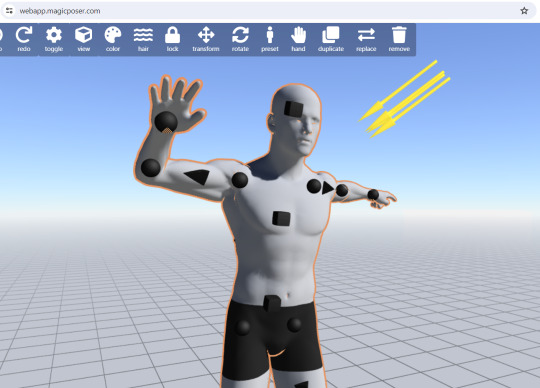
MIXAMO

Pose Archives

Bodies in Motion
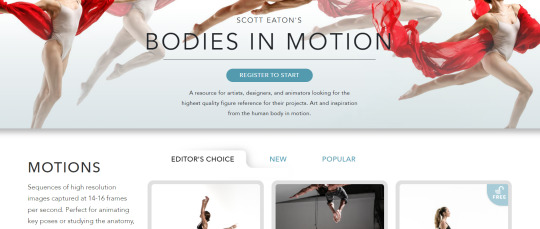
Posemy.art
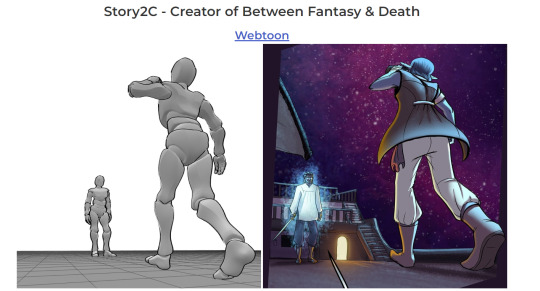
ReferenceAngle
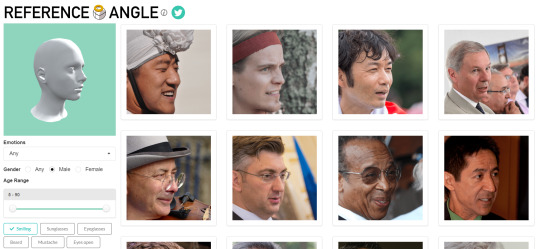
CroquisCafe
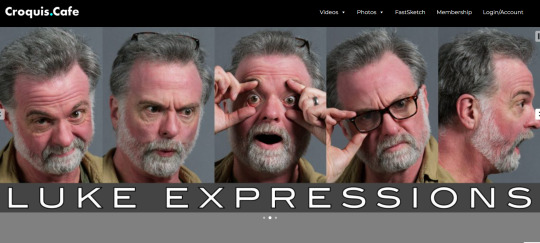
#reference#tutorial#art reference#anatomy#art#poses#artist#art resources#resources#web#pages#help#guide#action#line#figure#body#muscles#human#animal#animation#photography#3d model#angles#views#expressions#faces#emotion
4K notes
·
View notes
Text
Where to Start Your Research When Writing a Disabled Character
[large text: Where to Start Your Research When Writing a Disabled Character]
So you have decided that you want to make a disabled character! Awesome. But what's next? What information should you decide on at the early phrase of making the character?
This post will only talk about the disability part of the character creation process. Obviously, a disabled character needs a personality, interests, and backstory as every other one. But by including their disability early in the process, you can actually get it to have a deeper effect on the character - disability shouldn't be their whole life, but it should impact it. That's what disabilities do.
If you don't know what disability you would want to give them in the first place;
[large text: If you don't know what disability you would want to give them in the first place;]
Start broad. Is it sensory, mobility related, cognitive, developmental, autoimmune, neurodegenerative; maybe multiple of these, or maybe something else completely? Pick one and see what disabilities it encompasses; see if anything works for your character. Or...
If you have a specific symptom or aid in mind, see what could cause them. Don't assume or guess; not every wheelchair user is vaguely paralyzed below the waist with no other symptoms, not everyone with extensive scarring got it via physical trauma. Or...
Consider which disabilities are common in real life. Cerebral palsy, muscular dystrophy, stroke, cataracts, diabetes, intellectual disability, neuropathy, multiple sclerosis, epilepsy, thyroid disorders, autism, dwarfism, arthritis, cancers, brain damage, just to name a few.
Decide what specific type of condition they will have. If you're thinking about them having albinism, will it be ocular, oculocutaneous, or one of the rare syndrome-types? If you want to give them spinal muscular atrophy, which of the many possible onsets will they have? If they have Ehlers-Danlos Syndrome, which one out of the 13 different types do they have? Is their amputation below, or above the knee (it's a major difference)? Not all conditions will have subtypes, but it's worth looking into to not be surprised later. This will help you with further research.
If you're really struggling with figuring out what exact disability would make sense for your character, you can send an ask. Just make sure that you have tried the above and put actual specifics in your ask to give us something to work with. You can also check out our "disabled character ideas" tag.
Here are some ideas for a character using crutches.
Here are some ideas for a character with a facial difference (obligatory link: what is a facial difference?).
If you already know what disability your character is going to have;
[large text: If you already know what disability your character is going to have;]
Start by reading about the onset and cause of the condition. It could be acquired, congenital, progressive, potentially multiple of these. They could be caused by an illness, trauma, or something else entirely. Is your character a congenital amputee, or is it acquired? If acquired - how recently? Has it been a week, or 10 years? What caused them to become disabled - did they have meningitis, or was it an accident? Again, check what your options are - there are going to be more diverse than you expect.
Read about the symptoms. Do not assume or guess what they are. You will almost definitely discover something new. Example: a lot of people making a character with albinism don't realize that it has other symptoms than just lack of melanin, like nystagmus, visual impairment, and photophobia. Decide what your character experiences, to what degree, how frequently, and what do they do (or don't do) to deal with it.
Don't give your character only the most "acceptable" symptoms of their disability and ignore everything else. Example: many writers will omit the topic of incontinence in their para- and tetraplegic characters, even though it's extremely common. Don't shy away from aspects of disability that aren't romanticized.
Don't just... make them abled "because magic". If they're Deaf, don't give them some ability that will make them into an essentially hearing person. Don't give your blind character some "cheat" so that they can see, give them a cane. Don't give an amputee prosthetics that work better than meat limbs. To have a disabled character you need to have a character that's actually disabled. There's no way around it.
Think about complications your character could experience within the story. If your character wears their prosthetic a lot, they might start to experience skin breakdown or pain. Someone who uses a wheelchair a lot has a risk of pressure sores. Glowing and Flickering Fantasy Item might cause problems for someone photophobic or photosensitive. What do they do when that happens, or how do they prevent that from happening?
Look out for comorbidities. It's rare for disabled people to only have one medical condition and nothing else. Disabilities like to show up in pairs. Or dozens.
If relevant, consider mobility aids, assistive devices, and disability aids. Wheelchairs, canes, rollators, braces, AAC, walkers, nasal cannulas, crutches, white canes, feeding tubes, braillers, ostomy bags, insulin pumps, service dogs, trach tubes, hearing aids, orthoses, splints... the list is basically endless, and there's a lot of everyday things that might count as a disability aid as well - even just a hat could be one for someone whose disability requires them to stay out of the sun. Make sure that it's actually based on symptoms, not just your assumptions - most blind people don't wear sunglasses, not all people with SCI use a wheelchair, upper limb prosthetics aren't nearly as useful as you think. Decide which ones your character could have, how often they would use them, and if they switch between different aids.
Basically all of the above aids will have subtypes or variants. There is a lot of options. Does your character use an active manual wheelchair, a powerchair, or a generic hospital wheelchair? Are they using high-, or low-tech AAC? What would be available to them? Does it change over the course of their story, or their life in general?
If relevant, think about what treatment your character might receive. Do they need medication? Physical therapy? Occupational therapy? Orientation and mobility training? Speech therapy? Do they have access to it, and why or why not?
What is your character's support system? Do they have a carer; if yes, then what do they help your character with and what kind of relationship do they have? Is your character happy about it or not at all?
How did their life change after becoming disabled? If your character goes from being an extreme athlete to suddenly being a full-time wheelchair user, it will have an effect - are they going to stop doing sports at all, are they going to just do extreme wheelchair sports now, or are they going to try out wheelchair table tennis instead? Do they know and respect their new limitations? Did they have to get a different job or had to make their house accessible? Do they have support in this transition, or are they on their own - do they wish they had that support?
What about *other* characters? Your character isn't going to be the only disabled person in existence. Do they know other disabled people? Do they have a community? If your character manages their disability with something that's only available to them, what about all the other people with the same disability?
What is the society that your character lives in like? Is the architecture accessible? How do they treat disabled people? Are abled characters knowledgeable about disabilities? How many people speak the local sign language(s)? Are accessible bathrooms common, or does your character have to go home every few hours? Is there access to prosthetists and ocularists, or what do they do when their prosthetic leg or eye requires the routine check-up?
Know the tropes. If a burn survivor character is an evil mask-wearer, if a powerchair user is a constantly rude and ungrateful to everyone villain, if an amputee is a genius mechanic who fixes their own prosthetics, you have A Trope. Not all tropes are made equal; some are actively harmful to real people, while others are just annoying or boring by the nature of having been done to death. During the character creation process, research what tropes might apply and just try to trace your logic. Does your blind character see the future because it's a common superpower in their world, or are you doing the ancient "Blind Seer" trope?
Remember, that not all of the above questions will come up in your writing, but to know which ones won't you need to know the answers to them first. Even if you don't decide to explicitly name your character's condition, you will be aware of what they might function like. You will be able to add more depth to your character if you decide that they have T6 spina bifida, rather than if you made them into an ambiguous wheelchair user with ambiguous symptoms and ambiguous needs. Embrace research as part of your process and your characters will be better representation, sure, but they will also make more sense and seem more like actual people; same with the world that they are a part of.
This post exists to help you establish the basics of your character's disability so that you can do research on your own and answer some of the most common ("what are symptoms of x?") questions by yourself. If you have these things already established, it will also be easier for us to answer any possible questions you might have - e.g. "what would a character with complete high-level paraplegia do in a world where the modern kind of wheelchair has not been invented yet?" is much more concise than just "how do I write a character with paralysis?" - I think it's more helpful for askers as well; a vague answer won't be much help, I think.
I hope that this post is helpful!
Mod Sasza
#mod sasza#writing reference#writing advice#writing resources#writeblr#writing disabled characters#writing resource#long post#writing tips#writing guide
2K notes
·
View notes
Text
WWC’s A Beginner’s Guide to Academic Research
We are pleased to present WWC’s A Beginner’s Guide to Academic Research!
This pandemic project has been over 2 years in the making and we hope it will greatly assist any of our readers who are eager to conduct in-depth research but may be at a loss where to start.
Go to the Guide Here
The guide is split into 6 parts:
Introduction and Table of Contents
Part 1: Getting Started
Part 2: Searching for Sources Online
Part 3: Evaluating Sources
Part 4: Navigating Academic Sources
Part 5: Recognizing Your Limits
Each portion of the guide has links to connect to the previous and next sections. While it is possible to view tumblr pages on phones and tablets through the app, we highly recommend viewing this guide via browser on desktop whenever possible. Tumblr page formatting is better suited for browsers and each section is very dense with information, which will make scrolling in the app or on your dashboard difficult.
Future FAQ/ Discussion:
As noted in part 5 of the guide, for the next two weeks, we will be keeping an eye on the notes for this post. If you have further questions or comments about academic research, drop them here and we will select the most pertinent to respond to in a later post.
If you find this guide helpful, we request that you consider tipping the moderators below for the work and time required from conception, to drafting, formatting and debugging. Their ko-fis are listed below:
Rina: https://ko-fi.com/arcanabean
Marika: https://ko-fi.com/5h1njuu
5K notes
·
View notes
Text


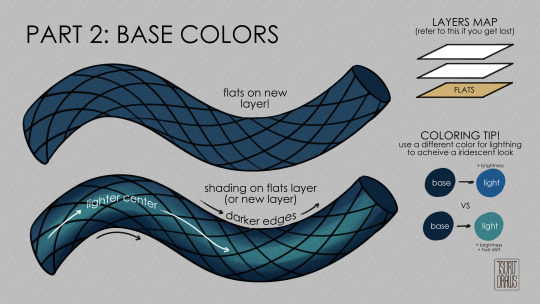

getting back into painting my dragon bois more so a lil tutorial for how i paint scales!
#art tutorial#art tips#snakeskin#art guide#how to draw#how to paint#scales#scale#snakes#dragons#no but have fun this is just how my brain does it#digital art#clip studio paint#tutorial#art resource#tsurudrawsart#tsurutips
11K notes
·
View notes
Text
SO YOU WANT TO GET HIRED IS NOW LIVE ON ITCHIO! :D
This thirty-page guide is specifically written to help you navigate the world of working-class jobs. In it, I break down what to put in your resume (even if you have no experience at all!), how to dress for the interview, how to play the very confusing and nonsensical world of the working-class interview, and what happens after you drag yourself out of the crucible of the interview on your hands and knees.
It's helpful! It's for those of us who want to know how to get hired for something as menial as a food runner! It's not that long, so you don't need to carve out several hours to in-depth research! It's got jokes — and Brian David Gilbert references!
Please reblog to help reach as many people as possible, because sometimes we all need a little help adulting, and I'm here to share what I know with you, no judgment.
(If you want to make sure I am not forced to be victim to website fees, you can always just send me $3 on Ca$h@pp/V3nm0 (deadtower) or P@yp@l (paypal.me/deadtower) and email me at [email protected] with your username/when you sent the money, and I can send you the PDF that way! Also, if you can't afford it, no worries! Just shoot me an email and I'll send it to you discounted to as low as $1, or for free, depending on your financial situation. I want everyone to have access to the resources they deserve. <3)
#writeblr#jobs#hiring#resources#hospitality#idk what tags to put lol these are my best guesses#but really and truly please reblog this if you can! it's the ONLY way it's gonna make it around#it's very cheap it's $3 or less if you can't afford the $3#and that was after asking a bunch of people what to price it at#oughhhh please. i come to you asking politely. i need this to be spread around#you never know who on your timeline is desperate for a guide like this#and i'm not gonna lie knowing tumblr's demographic it's a LOT of people
2K notes
·
View notes
Text
ear’s guide to writing stab wounds
disclaimer!!!: this isn’t to be used as actual medical advice there isn’t enough information at hand to properly treat someone, this is just for writing.
hemostatic (blood clotting) control is the number one priority. minor bleeding can be controlled with direct pressure to the wound. moderate bleeding may require a compression bandage as well as direct pressure. severe penetrating wounds or a nicked artery means wound packing will be necessary as well as direct pressure.
types of stab wounds:
- blunt stab wound means whatever object caused the trauma wasn’t sharp or wasn’t moving fast enough so the skin tears.
- penetrating stab wounds go deep into the skin and into the muscle.
- superficial stab wounds don’t go too far under the skin and look worse than they actually are.
steps to treatment:
1. if the object is still inside the person’s body do not remove it unless it’s to the groin, neck, or axillae (armpit) and the bleeding is hard to control.
2. remove person’s clothes to check for any other wounds and keep the area clear.
3. keep an eye on blood pressure and airway.
4. the wound type and location changes how the rest of treatment will follow.
location:
head: direct pressure is mainstay. head wounds also bleed more than any other part of the body. has the highest mortality rate.
face: severe wounds to the face means the patient has to be seated forward to keep blood out of the airway.
neck: direct pressure is mainstay. if the airway can be secured and is absolutely necessary, wound packing can be applied.
arms: depending on the severity, any of the three treatments can be used.
legs: depending on the severity, any of the three treatments can be used.
abdomen: damage to organs is highly likely. direct pressure should be applied first while surveying if the object was long enough to damage an organ. if so, wound packing may be necessary.
chest: if the wound is deep enough it can cause open pneumothorax (‘sucking’ chest wound) a seal needs to be placed over the wound to keep air from getting inside. if this isn’t done in time the affected lung will collapse.
back: can typically be treated with only direct pressure. wound packing is rarely necessary.
neck, chest, abdomen, and pelvis wounds should never be packed unless absolutely necessary.
treatment types:
direct pressure: key to any wound. can be done with whatever is available even if that means the medic needs to use their own body weight.
tourniquets: applied to the limbs. typically not applied for more than thirty minutes. in some cases, they can be left on for hours, keeping the phrase “life over limb” in mind. complications with tourniquets like nerve damage or ischemia (no blood circulation) are rare. don’t apply over a joint and apply above the wound.
wound packing: done with standard gauze and or hemostatic dressing
wound packing steps:
1. control the bleeding with pressure. use anything available even if it means t shirts or a knee.
2. place a gloved finger inside the wound too apply initial pressure. this will hurt like a bitch. also gives you an idea of what direction the blood is coming from so gauze can be used more accurately.
3. begin packing the wound with gauze. keep pressure on the wound with finger while wrapping gauze around another finger and pushing it in the wound.
4. keep packing the wound until no more gauze can fit in, and then keep direct pressure on for at least three minutes.
5. after the three minutes, use something like a bandage wrap to keep the gauze secure inside the wound.
6. splinting the area to keep it immobilized may be vital to keep the hemorrhage from restarting
7. if bleeding continues medic has to decide if they need to take out gauze and reapply with new gauze or apply more direct pressure. this is usually done by how long it takes to get to further treatment. the longer the wait the more of an incentive it becomes to repack the wound. if it’s just down the road then apply pressure.
most likely complications:
hypoxia, shock, and hypothermia are complications that need to be watched for and treated immediately if they occur.
hypoxia:
occurs when a region of the body doesn’t have enough oxygen in the tissue. can lead to organ damage, brain and heart damage being the most dangerous.
symptoms include: tachycardia (rapid heart rate), difficulty breathing, confusion, shortness of breath, anxiety, headache, and restlessness.
severe symptoms include: bradycardia (slow heart rate), extreme restlessness, and cyanosis (blue or purple tint to skin).
treatment: oxygen
shock:
life threatening condition where the body doesn’t have enough blood volume to circulate through itself. if it goes on for long enough, organ damage and death may occur.
symptoms: rapid, slow, or absent pulse, heart palpitations, rapid shallow breathing, lightheadedness, cold clammy skin, dilated pupils, chest pain, nausea, unfocused eyes, confusion, anxiety, and loss of consciousness.
treatment: if they’re not breathing, cpr is required. if they are breathing, lay on back and raise feet a foot off the ground to keep blood in the vital organs.
blood transfusion and fluids once in a hospital setting.
hypothermia: occurs when the body is losing heat quicker than it can produce. the more blood that’s lost the more likely hypothermia is to occur.
symptoms: differ based on severity
hypothermia:
in mild hypothermia: shivering, exhaustion, clumsiness, sleepiness, weak pulse, tachycardia (rapid heart rate), tachypnea (rapid breathing), pale skin, confusion, and trouble speaking.
in moderate hypothermia: bradycardia (slow heart rate), bradypnea (slow breathing), slurred speech, decline in mental function, shivering slows down, hallucinations, cyanosis (blue or purple tint to skin), muscle stiffness, dilated pupils, irregular heart rate, hypotension (decreased blood pressure), and loss of consciousness.
in severe hypothermia: shivering stops, hypotension (low blood pressure), absence of reflexes, compete muscle stiffness, fluid builds up in lungs, loss of voluntary motion, cardiac arrest (heart stops beating), coma, and death.
treatment: covering with a blanket, hat, and jacket, adding external heat like a hot pack, and if severe and in a hospital setting, warm fluids via iv, warm oxygen, and or a machine to warm the blood in the body.
if you have any questions feel free to ask! i plan on making a guide to gunshot wounds and a more in depth guide to hypothermia later.
#tips for writers#writing advice#helping writers#writing resources#resources for writers#writing tips#writing help#creative writing#trauma writing guide#medical writing tips#writing guide#medical writing guide#stab wound#call of duty#cod#call of duty modern warfare#ear’s guide to writing
537 notes
·
View notes
Text
A guide to all accessibility-related needs on the indie web!

I've been sharing this site around in all sorts of places, but I wanted to post it here, too - the Accessible Net Directory!
The indie web has a problem with accessibility. Namely, it seems like very few creators care to implement it. Which I get! It seems daunting to tackle at first. But also, it makes the indie web really, really difficult to traverse for disabled folks.
The Accessible Net Directory is two-fold in its uses.
1) It provides disabled people a list of safe indie sites
In order for a site to be featured on the directory, it needs to meet basic accessibility guidelines. This includes (but isn't limited to) no autoplay, unlabeled flashing images, low contrast, small / hard-to-read fonts, keyboard inaccessibility or non-described images.
Additional, non-required accessibility options for the directory are encouraged, and listed in a site's description on the directory. (Such as zoom-friendliness and different font options.)
2) It provides webmasters a ton of resources for implementing accessibility
It not only provides a list of steps one can take to make their site more accessible, but also provides the "why" of each step.
For example - one listed guideline for the directory is to use rem/em instead of px units for font sizes. Why? Well, the directory explains, "Users with low vision may need to increase the size of the text in order to be able to read and see better. Therefore it is important to always use scalable units for text."
Then, it goes on to list RESOURCES for changing px to rem/em!!
This site is an absolute treasure trove of resources for making your site accessible, and doing so with ease! I've used the resources listed to make my own site more accessible, and it's made the process seem so much more manageable!
So! If you run a personal site, then give the site a look, learn about accessibility practices, and apply them to your site! An inaccessible web is not a free web!
#neocities#indie web#web revival#old web#webcore#old internet#html#website#resource#guide#directory#accessibility#disability advocacy#azure does a thing
2K notes
·
View notes
Text

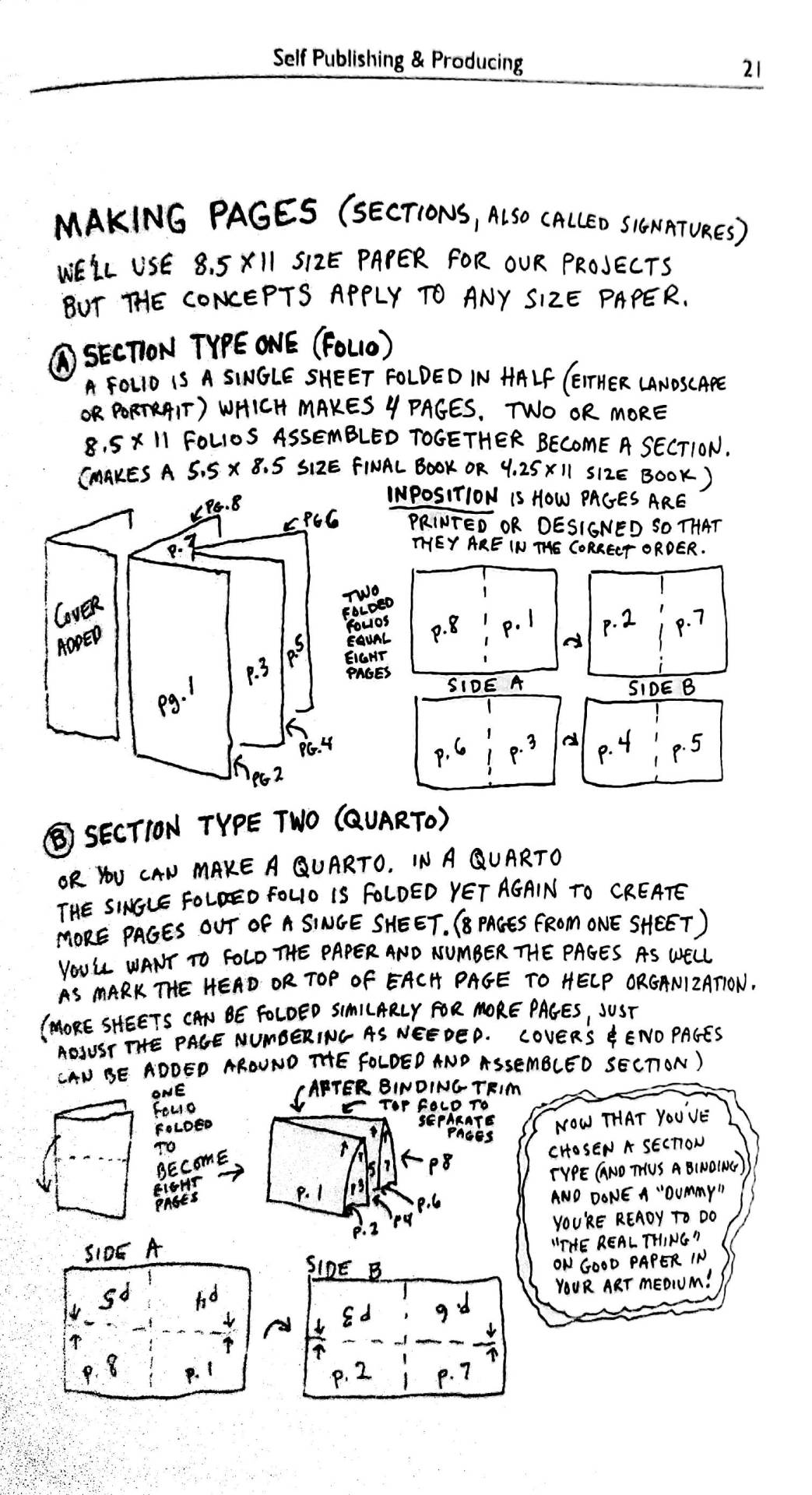
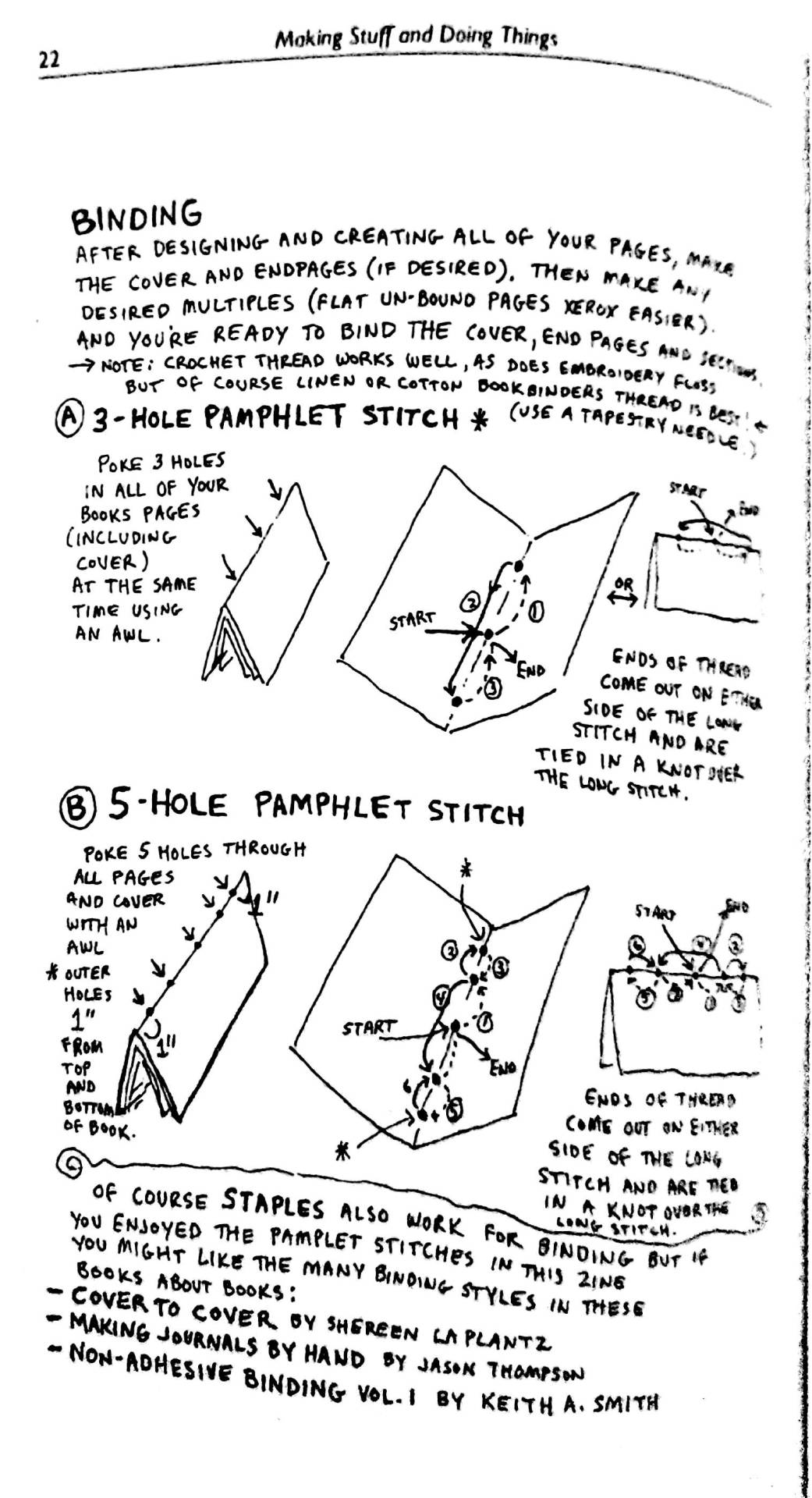
Pages 20-22 of Making Stuff and Doing Things by Kyle Bravo
Why Make a Zine or Artist Book? by Sue Clancy
#diy punk#punk#diy or die#crust punk#diy inspiration#diy#zines#zine#msadt#diy guide#resources#diy book
1K notes
·
View notes
Text
Fantasy Guide to Interiors



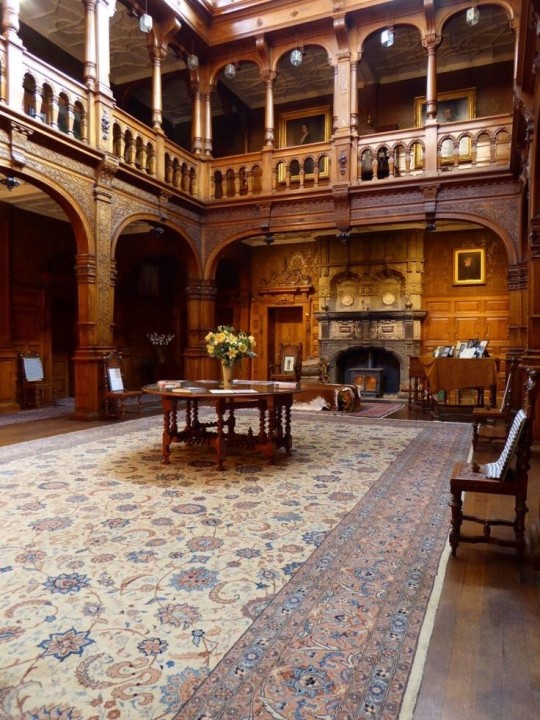
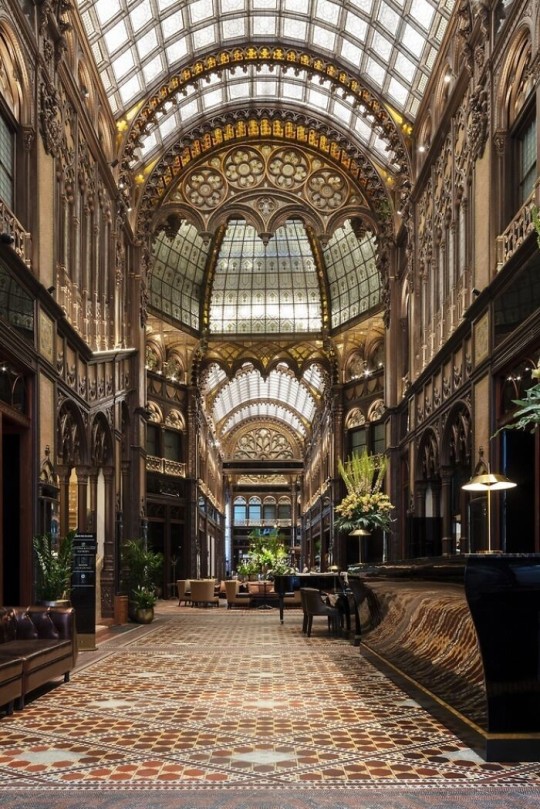
As a followup to the very popular post on architecture, I decided to add onto it by exploring the interior of each movement and the different design techniques and tastes of each era. This post at be helpful for historical fiction, fantasy or just a long read when you're bored.
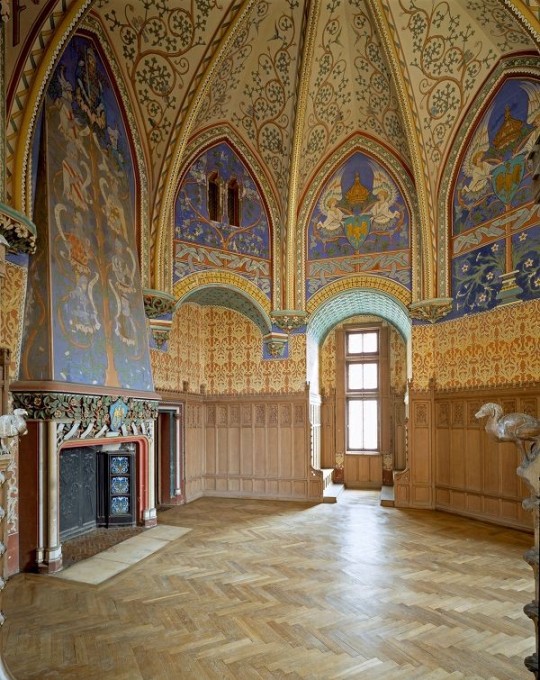


Interior Design Terms
Reeding and fluting: Fluting is a technique that consists a continuous pattern of concave grooves in a flat surface across a surface. Reeding is it's opposite.
Embossing: stamping, carving or moulding a symbol to make it stand out on a surface.
Paneling: Panels of carved wood or fabric a fixed to a wall in a continuous pattern.
Gilding: the use of gold to highlight features.
Glazed Tile: Ceramic or porcelain tiles coated with liquid coloured glass or enamel.
Column: A column is a pillar of stone or wood built to support a ceiling. We will see more of columns later on.
Bay Window: The Bay Window is a window projecting outward from a building.
Frescos: A design element of painting images upon wet plaster.
Mosaic: Mosaics are a design element that involves using pieces of coloured glass and fitted them together upon the floor or wall to form images.
Mouldings: ornate strips of carved wood along the top of a wall.
Wainscoting: paneling along the lower portion of a wall.
Chinoiserie: A European take on East Asian art. Usually seen in wallpaper.
Clerestory: A series of eye-level windows.
Sconces: A light fixture supported on a wall.
Niche: A sunken area within a wall.
Monochromatic: Focusing on a single colour within a scheme.
Ceiling rose: A moulding fashioned on the ceiling in the shape of a rose usually supporting a light fixture.
Baluster: the vertical bars of a railing.
Façade: front portion of a building
Lintel: Top of a door or window.
Portico: a covered structure over a door supported by columns
Eaves: the part of the roof overhanging from the building
Skirting: border around lower length of a wall
Ancient Greece
Houses were made of either sun-dried clay bricks or stone which were painted when they dried. Ground floors were decorated with coloured stones and tiles called Mosaics. Upper level floors were made from wood. Homes were furnished with tapestries and furniture, and in grand homes statues and grand altars would be found. Furniture was very skillfully crafted in Ancient Greece, much attention was paid to the carving and decoration of such things. Of course, Ancient Greece is ancient so I won't be going through all the movements but I will talk a little about columns.
Doric: Doric is the oldest of the orders and some argue it is the simplest. The columns of this style are set close together, without bases and carved with concave curves called flutes. The capitals (the top of the column) are plain often built with a curve at the base called an echinus and are topped by a square at the apex called an abacus. The entablature is marked by frieze of vertical channels/triglyphs. In between the channels would be detail of carved marble. The Parthenon in Athens is your best example of Doric architecture.
Ionic: The Ionic style was used for smaller buildings and the interiors. The columns had twin volutes, scroll-like designs on its capital. Between these scrolls, there was a carved curve known as an egg and in this style the entablature is much narrower and the frieze is thick with carvings. The example of Ionic Architecture is the Temple to Athena Nike at the Athens Acropolis.
Corinthian: The Corinthian style has some similarities with the Ionic order, the bases, entablature and columns almost the same but the capital is more ornate its base, column, and entablature, but its capital is far more ornate, commonly carved with depictions of acanthus leaves. The style was more slender than the others on this list, used less for bearing weight but more for decoration. Corinthian style can be found along the top levels of the Colosseum in Rome.
Tuscan: The Tuscan order shares much with the Doric order, but the columns are un-fluted and smooth. The entablature is far simpler, formed without triglyphs or guttae. The columns are capped with round capitals.
Composite: This style is mixed. It features the volutes of the Ionic order and the capitals of the Corinthian order. The volutes are larger in these columns and often more ornate. The column's capital is rather plain. for the capital, with no consistent differences to that above or below the capital.
Ancient Rome
Rome is well known for its outward architectural styles. However the Romans did know how to add that rizz to the interior. Ceilings were either vaulted or made from exploded beams that could be painted. The Romans were big into design. Moasics were a common interior sight, the use of little pieces of coloured glass or stone to create a larger image. Frescoes were used to add colour to the home, depicting mythical figures and beasts and also different textures such as stonework or brick. The Romans loved their furniture. Dining tables were low and the Romans ate on couches. Weaving was a popular pastime so there would be tapestries and wall hangings in the house. Rich households could even afford to import fine rugs from across the Empire. Glass was also a feature in Roman interior but windows were usually not paned as large panes were hard to make. Doors were usually treated with panels that were carved or in lain with bronze.
Ancient Egypt
Egypt was one of the first great civilisations, known for its immense and grand structures. Wealthy Egyptians had grand homes. The walls were painted or plastered usually with bright colours and hues. The Egyptians are cool because they mapped out their buildings in such a way to adhere to astrological movements meaning on special days if the calendar the temple or monuments were in the right place always. The columns of Egyptian where thicker, more bulbous and often had capitals shaped like bundles of papyrus reeds. Woven mats and tapestries were popular decor. Motifs from the river such as palms, papyrus and reeds were popular symbols used.
Ancient Africa
African Architecture is a very mixed bag and more structurally different and impressive than Hollywood would have you believe. Far beyond the common depictions of primitive buildings, the African nations were among the giants of their time in architecture, no style quite the same as the last but just as breathtaking.
Rwandan Architecture: The Rwandans commonly built of hardened clay with thatched roofs of dried grass or reeds. Mats of woven reeds carpeted the floors of royal abodes. These residences folded about a large public area known as a karubanda and were often so large that they became almost like a maze, connecting different chambers/huts of all kinds of uses be they residential or for other purposes.
Ashanti Architecture: The Ashanti style can be found in present day Ghana. The style incorporates walls of plaster formed of mud and designed with bright paint and buildings with a courtyard at the heart, not unlike another examples on this post. The Ashanti also formed their buildings of the favourite method of wattle and daub.
Nubian Architecture: Nubia, in modern day Ethiopia, was home to the Nubians who were one of the world's most impressive architects at the beginning of the architecture world and probably would be more talked about if it weren't for the Egyptians building monuments only up the road. The Nubians were famous for building the speos, tall tower-like spires carved of stone. The Nubians used a variety of materials and skills to build, for example wattle and daub and mudbrick. The Kingdom of Kush, the people who took over the Nubian Empire was a fan of Egyptian works even if they didn't like them very much. The Kushites began building pyramid-like structures such at the sight of Gebel Barkal
Japanese Interiors
Japenese interior design rests upon 7 principles. Kanso (簡素)- Simplicity, Fukinsei (不均整)- Asymmetry, Shizen (自然)- Natural, Shibumi (渋味) – Simple beauty, Yugen (幽玄)- subtle grace, Datsuzoku (脱俗) – freedom from habitual behaviour, Seijaku (静寂)- tranquillity.
Common features of Japanese Interior Design:
Shoji walls: these are the screens you think of when you think of the traditional Japanese homes. They are made of wooden frames, rice paper and used to partition
Tatami: Tatami mats are used within Japanese households to blanket the floors. They were made of rice straw and rush straw, laid down to cushion the floor.
Genkan: The Genkan was a sunken space between the front door and the rest of the house. This area is meant to separate the home from the outside and is where shoes are discarded before entering.
Japanese furniture: often lowest, close to the ground. These include tables and chairs but often tanked are replaced by zabuton, large cushions. Furniture is usually carved of wood in a minimalist design.
Nature: As both the Shinto and Buddhist beliefs are great influences upon architecture, there is a strong presence of nature with the architecture. Wood is used for this reason and natural light is prevalent with in the home. The orientation is meant to reflect the best view of the world.
Islamic World Interior
The Islamic world has one of the most beautiful and impressive interior design styles across the world. Colour and detail are absolute staples in the movement. Windows are usually not paned with glass but covered in ornate lattices known as jali. The jali give ventilation, light and privacy to the home. Islamic Interiors are ornate and colourful, using coloured ceramic tiles. The upper parts of walls and ceilings are usually flat decorated with arabesques (foliate ornamentation), while the lower wall areas were usually tiled. Features such as honeycombed ceilings, horseshoe arches, stalactite-fringed arches and stalactite vaults (Muqarnas) are prevalent among many famous Islamic buildings such as the Alhambra and the Blue Mosque.
Byzantine (330/395–1453 A. D)
The Byzantine Empire or Eastern Roman Empire was where eat met west, leading to a melting pot of different interior designs based on early Christian styles and Persian influences. Mosaics are probably what you think of when you think of the Byzantine Empire. Ivory was also a popular feature in the Interiors, with carved ivory or the use of it in inlay. The use of gold as a decorative feature usually by way of repoussé (decorating metals by hammering in the design from the backside of the metal). Fabrics from Persia, heavily embroidered and intricately woven along with silks from afar a field as China, would also be used to upholster furniture or be used as wall hangings. The Byzantines favoured natural light, usually from the use of copolas.
Indian Interiors
India is of course, the font of all intricate designs. India's history is sectioned into many eras but we will focus on a few to give you an idea of prevalent techniques and tastes.
The Gupta Empire (320 – 650 CE): The Gupta era was a time of stone carving. As impressive as the outside of these buildings are, the Interiors are just as amazing. Gupta era buildings featured many details such as ogee (circular or horseshoe arch), gavaksha/chandrashala (the motif centred these arches), ashlar masonry (built of squared stone blocks) with ceilings of plain, flat slabs of stone.
Delhi Sultanate (1206–1526): Another period of beautifully carved stone. The Delhi sultanate had influence from the Islamic world, with heavy uses of mosaics, brackets, intricate mouldings, columns and and hypostyle halls.
Mughal Empire (1526–1857): Stonework was also important on the Mughal Empire. Intricately carved stonework was seen in the pillars, low relief panels depicting nature images and jalis (marble screens). Stonework was also decorated in a stye known as pietra dura/parchin kari with inscriptions and geometric designs using colored stones to create images. Tilework was also popular during this period. Moasic tiles were cut and fitted together to create larger patters while cuerda seca tiles were coloured tiles outlined with black.
Chinese Interiors
Common features of Chinese Interiors
Use of Colours: Colour in Chinese Interior is usually vibrant and bold. Red and Black are are traditional colours, meant to bring luck, happiness, power, knowledge and stability to the household.
Latticework: Lattices are a staple in Chinese interiors most often seen on shutters, screens, doors of cabinets snf even traditional beds.
Lacquer: Multiple coats of lacquer are applied to furniture or cabinets (now walls) and then carved. The skill is called Diaoqi (雕漆).
Decorative Screens: Screens are used to partition off part of a room. They are usually of carved wood, pained with very intricate murals.
Shrines: Spaces were reserved on the home to honour ancestors, usually consisting of an altar where offerings could be made.
Of course, Chinese Interiors are not all the same through the different eras. While some details and techniques were interchangeable through different dynasties, usually a dynasty had a notable style or deviation. These aren't all the dynasties of course but a few interesting examples.
Song Dynasty (960–1279): The Song Dynasty is known for its stonework. Sculpture was an important part of Song Dynasty interior. It was in this period than brick and stone work became the most used material. The Song Dynasty was also known for its very intricate attention to detail, paintings, and used tiles.
Ming Dynasty(1368–1644): Ceilings were adorned with cloisons usually featuring yellow reed work. The floors would be of flagstones usually of deep tones, mostly black. The Ming Dynasty favoured richly coloured silk hangings, tapestries and furnishings. Furniture was usually carved of darker woods, arrayed in a certain way to bring peace to the dwelling.
Han Dynasty (206 BC-220 AD): Interior walls were plastered and painted to show important figures and scenes. Lacquer, though it was discovered earlier, came into greater prominence with better skill in this era.
Tang Dynasty (618–907) : The colour palette is restrained, reserved. But the Tang dynasty is not without it's beauty. Earthenware reached it's peak in this era, many homes would display fine examples as well. The Tang dynasty is famous for its upturned eaves, the ceilings supported by timber columns mounted with metal or stone bases. Glazed tiles were popular in this era, either a fixed to the roof or decorating a screen wall.
Romanesque (6th -11th century/12th)
Romanesque Architecture is a span between the end of Roman Empire to the Gothic style. Taking inspiration from the Roman and Byzantine Empires, the Romanesque period incorporates many of the styles. The most common details are carved floral and foliage symbols with the stonework of the Romanesque buildings. Cable mouldings or twisted rope-like carvings would have framed doorways. As per the name, Romansque Interiors relied heavily on its love and admiration for Rome. The Romanesque style uses geometric shapes as statements using curves, circles snf arches. The colours would be clean and warm, focusing on minimal ornamentation.
Gothic Architecture (12th Century - 16th Century)
The Gothic style is what you think of when you think of old European cathedrals and probably one of the beautiful of the styles on this list and one of most recognisable. The Gothic style is a dramatic, opposing sight and one of the easiest to describe. Decoration in this era became more ornate, stonework began to sport carving and modelling in a way it did not before. The ceilings moved away from barreled vaults to quadripartite and sexpartite vaulting. Columns slimmed as other supportive structures were invented. Intricate stained glass windows began their popularity here. In Gothic structures, everything is very symmetrical and even.
Mediaeval (500 AD to 1500)
Interiors of mediaeval homes are not quite as drab as Hollywood likes to make out. Building materials may be hidden by plaster in rich homes, sometimes even painted. Floors were either dirt strewn with rushes or flagstones in larger homes. Stonework was popular, especially around fireplaces. Grand homes would be decorated with intricate woodwork, carved heraldic beasts and wall hangings of fine fabrics.
Renaissance (late 1300s-1600s)
The Renaissance was a period of great artistry and splendor. The revival of old styles injected symmetry and colour into the homes. Frescoes were back. Painted mouldings adorned the ceilings and walls. Furniture became more ornate, fixed with luxurious upholstery and fine carvings. Caryatids (pillars in the shape of women), grotesques, Roman and Greek images were used to spruce up the place. Floors began to become more intricate, with coloured stone and marble. Modelled stucco, sgraffiti arabesques (made by cutting lines through a layer of plaster or stucco to reveal an underlayer), and fine wall painting were used in brilliant combinations in the early part of the 16th century.
Tudor Interior (1485-1603)
The Tudor period is a starkly unique style within England and very recognisable. Windows were fixed with lattice work, usually casement. Stained glass was also in in this period, usually depicting figures and heraldic beasts. Rooms would be panelled with wood or plastered. Walls would be adorned with tapestries or embroidered hangings. Windows and furniture would be furnished with fine fabrics such as brocade. Floors would typically be of wood, sometimes strewn with rush matting mixed with fresh herbs and flowers to freshen the room.
Baroque (1600 to 1750)
The Baroque period was a time for splendor and for splashing the cash. The interior of a baroque room was usually intricate, usually of a light palette, featuring a very high ceiling heavy with detail. Furniture would choke the room, ornately carved and stitched with very high quality fabrics. The rooms would be full of art not limited to just paintings but also sculptures of marble or bronze, large intricate mirrors, moldings along the walls which may be heavily gilded, chandeliers and detailed paneling.
Victorian (1837-1901)
We think of the interiors of Victorian homes as dowdy and dark but that isn't true. The Victorians favoured tapestries, intricate rugs, decorated wallpaper, exquisitely furniture, and surprisingly, bright colour. Dyes were more widely available to people of all stations and the Victorians did not want for colour. Patterns and details were usually nature inspired, usually floral or vines. Walls could also be painted to mimic a building material such as wood or marble and most likely painted in rich tones. The Victorians were suckers for furniture, preferring them grandly carved with fine fabric usually embroidered or buttoned. And they did not believe in minimalism. If you could fit another piece of furniture in a room, it was going in there. Floors were almost eclusively wood laid with the previously mentioned rugs. But the Victorians did enjoy tiled floors but restricted them to entrances. The Victorians were quite in touch with their green thumbs so expect a lot of flowers and greenery inside. with various elaborately decorated patterned rugs. And remember, the Victorians loved to display as much wealth as they could. Every shelf, cabinet, case and ledge would be chocked full of ornaments and antiques.
Edwardian/The Gilded Age/Belle Epoque (1880s-1914)
This period (I've lumped them together for simplicity) began to move away from the deep tones and ornate patterns of the Victorian period. Colour became more neutral. Nature still had a place in design. Stained glass began to become popular, especially on lampshades and light fixtures. Embossing started to gain popularity and tile work began to expand from the entrance halls to other parts of the house. Furniture began to move away from dark wood, some families favouring breathable woods like wicker. The rooms would be less cluttered.
Art Deco (1920s-1930s)
The 1920s was a time of buzz and change. Gone were the refined tastes of the pre-war era and now the wow factor was in. Walls were smoother, buildings were sharper and more jagged, doorways and windows were decorated with reeding and fluting. Pastels were in, as was the heavy use of black and white, along with gold. Mirrors and glass were in, injecting light into rooms. Gold, silver, steel and chrome were used in furnishings and decor. Geometric shapes were a favourite design choice. Again, high quality and bold fabrics were used such as animal skins or colourful velvet. It was all a rejection of the Art Noveau movement, away from nature focusing on the man made.
Modernism (1930 - 1965)
Modernism came after the Art Deco movement. Fuss and feathers were out the door and now, practicality was in. Materials used are shown as they are, wood is not painted, metal is not coated. Bright colours were acceptable but neutral palettes were favoured. Interiors were open and favoured large windows. Furniture was practical, for use rather than the ornamentation, featuring plain details of any and geometric shapes. Away from Art Deco, everything is straight, linear and streamlined.
#This took forever#I'm very tired#But enjoy#I covered as much as I could find#Fantasy Guide to interiors#interior design#Architecture#writings#writing resources#Writing reference#Writing advice#Writer's research#writing research#Writer's rescources#Writing help#Mediaeval#Renaissance#Chinese Interiors#Japanese Interiors#Indian interiors#writing#writeblr#writing reference#writing advice#writer#spilled words#writers
3K notes
·
View notes
Text
Do Your Research
This phrase is regularly thrown around writeblr and for good reason. It's important to research what you are writing about to know what to include, what can be fudged, and how to depict whatever you're writing. I see "do your research" most thrown around by well-meaning and highly traditionally educated writers. It's solid advice, after all!
But how do you research?
For those writers who don't already have the research skills necessary to write something comfortably already downloaded into your brain, I put this guide together for you.
Where do I even start?
It's a daunting task, research. But the best place to start is with the most basic, stupidest question you can think of. I'm going to talk about something that I already know a lot about: fighting.
When researching fight scenes, a great way to start is to look up what different weapons are. There are tons out there! So ask the stupid questions. What is a sword? What is a gun? How heavy are they?
Google and Wikipedia can help you a lot with these basic-level questions. They aren't great sources for academic articles, but remember, this is fiction. It doesn't need to be perfect, and it doesn't need to be 100% accurate if you don't want it to be. But knowing what is true to life will help you write well. Just like knowing the rules of writing will help you break them.
You may find in your basic research sweep that you have a lot more specific questions. Write them all down. It doesn't matter if they seem obvious. Write them down because they will be useful later.
How To Use Wikipedia Correctly
Wikipedia is a testament to cooperative human knowledge. It's also easy to edit by anonymous users, which means there is a lot of room for inaccuracies and misleading information. Wikipedia is usually pretty good about flagging when a source is needed or when misleading language is obvious, but Wikipedia itself isn't always the most accurate or in-depth source.
Wikipedia is, however, an excellent collection of sources. When I'm researching a subject that I know nothing about, say Norse mythology, a good starting point is the Wikipedia page for Odin. You'll get a little background on Odin's name and Germanic roots, a little backstory on some of the stories, where they appear, and how they are told.
When you read one of the sentences, and it sparks a new question, write the question down, and then click on the superscript number. This will take you directly to the linked source for the stated fact. Click through to that source. Now you have the source where the claim was made. This source may not be a primary source, but a secondary source can still lead you to new discoveries and details that will help you.
By "source-hopping," you can find your way across the internet to different pieces of information more reliably. This information may repeat itself, but you will also find new sources and new avenues of information that can be just as useful.
You mean I don't need a library?
Use your library. Libraries in many parts of the US are free to join, and they have a wealth of information that can be easily downloaded online or accessed via hardcopy books.
You don't, however, need to read every source in the library for any given topic, and you certainly don't need to read the whole book. Academic books are different from fiction. Often their chapters are divided by topic and concept and not by chronological events like a history textbook.
For example, one of my favorite academic books about legislative policy and how policy is passed in the US, by John Kingdon, discusses multiple concepts. These concepts build off one another, but ultimately if you want to know about one specific concept, you can skip to that chapter. This is common in sociological academic books as well.
Going off of my Norse Mythology example in the last section, a book detailing the Norse deities and the stories connected to them will include chapters on each member of the major pantheon. But if I only care about Odin, I can focus on just the chapters about Odin.
Academic Articles and How To Read Them
I know you all know how to read. But learning how to read academic articles and books is a skill unto itself. It's one I didn't quite fully grasp until grad school. Learn to skim. When looking at articles published in journals that include original research, they tend to follow a set structure, and the order in which you read them is not obvious. At all.
Start with the abstract. This is a summary of the paper that will include, in about half a page to a page, the research question, hypothesis, methods/analysis, and conclusions. This abstract will help you determine if the answer to your question is even in this article. Are they asking the right question?
Next, read the research question and hypothesis. The hypothesis will include details about the theory and why the researcher thinks what they think. The literature review will go into much more depth about theories, what other people have done and said, and how that ties into the research of the present article. You don't need to read that just yet.
Skim the methods and analysis section. Look at every data table and graph included and try to find patterns yourself. You don't need to read every word of this section, especially if you don't understand a lot of the words and jargon used. Some key points to consider are: qualitative vs. quantitative data, sample size, confounding factors, and results.
(Some definitions for those of you who are unfamiliar with these terms. Qualitative data is data that cannot be quantified into a number. These are usually stories and anecdotes. Quantitative data is data that can be transferred into a numerical representation. You can't graph qualitative data (directly), but you can graph quantitative data. Sample size is the number of people or things counted (n when used in academic articles). Your sample size can indicate how generalizable your conclusions are. So pay attention. Did the author interview 300 subjects? Or 30? There will be a difference. A confounding factor is a factor that may affect the working theory. An example of a theory would be "increasing LGBTQ resources in a neighborhood would decrease LGBTQ hate crimes in that area." A confounding factor would be "increased reporting of hate crimes in the area." The theory, including the confounding factor, would look like "increasing LGBTQ resources in a neighborhood would increase the reporting of hate crimes in the area, which increases the number of hate crimes measured in that area." The confounding factor changes the outcome because it is a factor not considered in the original theory. When looking at research, see if you can think of anything that may change the theory based on how that factor interacts with the broader concept. Finally, the results are different from the conclusions. The results tell you what the methods spit out. Analysis tells you what the results say, and conclusions tell you what generalizations can be made based on the analysis.)
Next, read the conclusion section. This section will tell you what general conclusions can be made from the information found in the paper. This will tell you what the author found in their research.
Finally, once you've done all that, go back to the literature review section. You don't have to read it necessarily, but reading it will give you an idea of what is in each sourced paper. Take note of the authors and papers sourced in the literature review and repeat the process on those papers. You will get a wide variety of expert opinions on whatever concept or niche you're researching.
Starting to notice a pattern?
My research methods may not necessarily work for everybody, but they are pretty standard practice. You may notice that throughout this guide, I've told you to "source-hop" or follow the sources cited in whatever source you find first. This is incredibly important. You need to know who people are citing when they make claims.
This guide focused on secondary sources for most of the guide. Primary sources are slightly different. Primary sources require understanding the person who created the source, who they were, and their motivations. You also may need to do a little digging into what certain words or phrases meant at the time it was written based on what you are researching. The Prose Edda, for example, is a telling of the Norse mythology stories written by an Icelandic historian in the 13th century. If you do not speak the language spoken in Iceland in 1232, you probably won't be able to read anything close to the original document. In fact, the document was lost for about 300 years. Now there are translations, and those translations are as close to the primary source you can get on Norse Mythology. But even then, you are reading through several veils of translation. Take these things into account when analyzing primary documents.
Research Takes Practice
You won't get everything you need to know immediately. And researching subjects you have no background knowledge of can be daunting, confusing, and frustrating. It takes practice. I learned how to research through higher formal education. But you don't need a degree to write, so why should you need a degree to collect information? I genuinely hope this guide helps others peel away some of the confusion and frustration so they can collect knowledge as voraciously as I do.
– Indy
#writing advice#writing tips#writing resources#writeblr#amwriting#writblr#writers of tumblr#writers on tumblr#writing help#writing guide#how to research#reading research articles#do some research#do your own research#do your research#research for writers#writing research#writing tip#writing reference#writer tips
2K notes
·
View notes